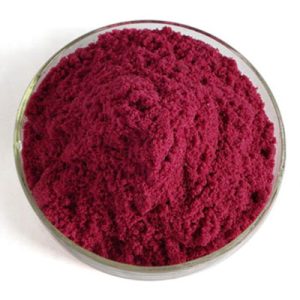Cobaltous Chloride
Specifications
| Item | Index | Index | Index | Index |
| Reagent grade A.R. | Reagent grade C.P. | Feed grade | Technical grade | |
| Assay % | ≥99.0 | ≥98.0 | ≥96.8 | ≥96.8 |
| Co% | —— | —— | ≥24.0 | ≥24.0 |
| Water insoluble% | ≤0.01 | ≤0.03 | ≤0.03 | ≤0.03 |
| Sulphates(SO4)% | ≤0.01 | ≤0.02 | —— | —— |
| Nitrates(NO3)% | ≤0.02 | ≤0.05 | —— | —— |
| Mn% | ≤0..005 | ≤0.02 | —— | —— |
| Iron(Fe)% | ≤0.001 | ≤0.002 | —— | —— |
| Ni% | ≤0.03 | ≤0.05 | —— | —— |
| Zinc(Zn)% | ≤0.05 | ≤0.2 | —— | —— |
| Cu% | ≤0.001 | ≤0.005 | —— | —— |
| Alkali metals and alkaline-earth metals(As sulphates) % | ≤0.2 | ≤0.3 | —— | —— |
| As% | —— | —— | ≤0.0005 | ≤0.0005 |
| Lead(Pb)% | —— | —— | ≤0.001 | ≤0.001 |
| Fineness: 800-mesh test sieve rate % | —— | —— | ≥95.0 | —— |
Packing& Storage
| Packing | 25kg cardboard drum, lined with double-layer plastic bag | |||||||
| Storage | 20℃, 2 years. | |||||||
| Shipping | Room temperature in China; may vary elsewhere | |||||||
General Information
1.1 Chemical & Physical Properties
| Common Names | Cobaltous Chloride | Dichlorocobalt hexahydrate | ||||||
| Structure |  |
||||||
| CAS No. | 7791-13-1 | Boiling Point (℃) | 1049 °C | ||||
| Molecular Weight | 237.931 | Melting Point (℃) | 86 °C | ||||
| Appearance | Red or reddish purple crystal. | Vapor Specific Gravity | N/A | ||||
| HS Code | 28273400 | Flash Point (℃) | N/A | ||||
| Solubility | soluble in water and alcohols, soluble in acetone, slightly soluble in ethers. | Autoignition Temperature (℃) | N/A | ||||
1.2 Safety Information
| Safety Phrases | S53-S22-S45-S60-S61 | |
| RIDADR | UN 3260 8/PG 2 | |
| WGK Germany | 2 | |
| Packaging Group | III | |
| Hazard Class | N/A | |
| SYMPTOMS | PREVENTION | FIRST AID | |
| Inhalation | Cough. Sore throat. | Use local exhaust or breathing protection. | Fresh air, rest. |
| Skin | Redness. Burning sensation. Itching. | Protective gloves. | Remove contaminated clothes. Rinse and then wash skin with water and soap. |
| Eyes | Redness. Pain. | Wear safety goggles. | First rinse with plenty of water for several minutes (remove contact lenses if easily possible), then refer for medical attention. |
| Ingestion | Abdominal pain. Nausea. Vomiting. | Do not eat, drink, or smoke during work. Wash hands before eating. | Rinse mouth. Induce vomiting (ONLY IN CONSCIOUS PERSONS!). Refer for medical attention . |
1.3 Synthetic Route
Metal cobalt method hydrochloric acid is added to the reactor, and then gradually added metal cobalt, so that it is dissolved and heated to 80 °C for reaction, and nitric acid is appropriately added according to the dissolution of metal cobalt, and the generated cobalt chloride solution is purified with hydrogen peroxide to remove iron, and sodium carbonate or ammonia is added if necessary to ensure complete purification. The purified cobalt chloride solution is adjusted to Ph2~3 with hydrochloric acid. After filtration, evaporation to boiling, cooling crystallization, centrifugal separation, drying to obtain cobalt chloride products.
Application?
It is commonly used in paint desiccants, ammonia gas absorbents, gas masks, wet and dry indicators, electroplating, barometers, ceramic colorants, catalysts and pharmaceutical reagents, etc.
Hazardous properties?
Health Hazard: Inhaling the dust of this product is irritating to the respiratory tract and prolonged inhalation can cause severe lung disease. For sensitive individuals, inhaling the dust of this product can cause pulmonary obstructive lesions and symptoms such as shortness of breath. The dust is irritating to eyes, and long-term exposure can cause eye damage. It is sensitive to the skin, and it can cause dermatitis. Ingestion of the product can cause nausea, vomiting, and diarrhea; large ingestion can cause acute poisoning, causing blood, thyroid and pancreas damage.
Environmental Hazards: No information available.
Explosion hazard: This product is non-flammable, toxic, irritating and sensitizing.
Handling and storage?
Handling Precautions: Closed operation, strengthen ventilation. Operators must undergo special training and strictly abide by the operating procedures. It is recommended that operators wear self-priming filter dust masks, chemical safety goggles, anti-poison infiltration overalls, and rubber gloves. Avoid generating dust. Avoid contact with alkali metals. When handling, load and unload lightly to prevent damage to packaging and containers. Equipped with leakage emergency treatment equipment. Empty containers may contain hazardous residues
Precautions for storage: Store in a cool, ventilated warehouse. Keep away from fire and heat sources. It should be stored separately from alkali metals and food chemicals, and should not be stored together. Storage areas should be equipped with suitable materials to contain spills.
Shipping precautions?
When transporting, the transport vehicle should be equipped with corresponding types and quantities of fire-fighting equipment and leakage emergency treatment equipment. It is best to transport in the morning and evening in summer. The tank truck used for transportation should have a grounding chain, and a hole partition can be set in the tank to reduce static electricity generated by vibration. It is strictly forbidden to mix and transport with oxidants, acids, alkalis, food chemicals, etc. During transportation, it should be protected from sun exposure, rain and high temperature. Stay away from fire, heat sources, and high-temperature areas during stopovers. The exhaust pipe of the vehicle carrying this product must be equipped with a fire arresting device, and it is forbidden to use mechanical equipment and tools that are prone to sparks to load and unload. When transporting by road, follow the prescribed route. It is forbidden to slip when transporting by rail. It is strictly forbidden to use wooden boats and cement boats for bulk transportation.
